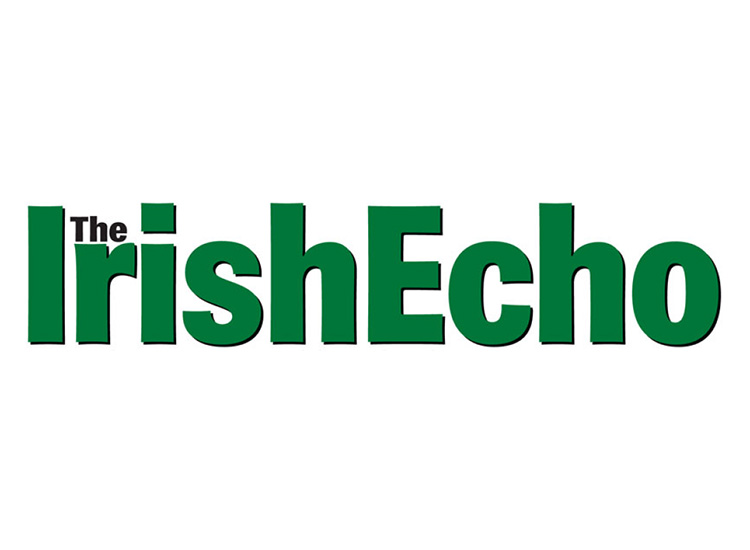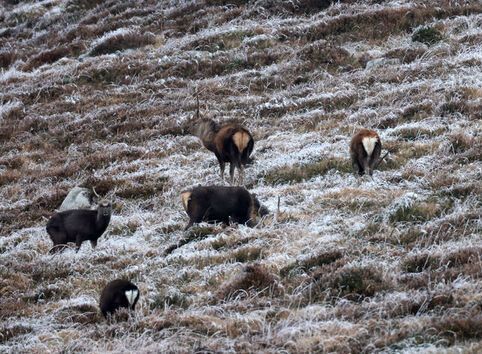by Frieda Klotz
Anyone who grew up in Ireland or visited it during all but the very final years of the twentieth century might hesitate to associate the country with gourmet food. Irish cuisine has traditionally been simple in the eyes of the broader world: a variation on the theme of meat and potatoes. In recent years, however, that has changed. And an organization called Good Food Ireland is spreading the word.
Representatives of Good Food Ireland were in the U.S. earlier this month to launch a new brand of Irish cuisine and a network that promotes Irish food while educating members of the food industry in Ireland.
GFI is on a mission to foster sustainable, authentic Irish products and cuisine. It was established by Margaret Jeffares in 2006, with the aim of encouraging innovation and high standards in Irish cooking.
"Coming from a farming background, born in a farm in County Clare, I'm very close to farming," Jeffares told the Irish Echo.
She decided to set up an organization that linked Irish farmers with Irish hotels and restaurants.
"All the statistics are there, that when you buy one euro's worth of food in the local economy it's multiplied; it's equivalent to 14 euros back into that local economy," she explained.
"So I just thought it would be a really good economic driver for Ireland, and it would be good for industry."
Over the past decade, there has been a revolution in Irish food. An influx of immigrants during the boom years helped to bring diversity. Indian restaurants and Spanish tapas made an appearance in towns and cities. Farmers' markets carrying local produce have sprung and flourished across the country.
And in 2012, eight Irish eateries were awarded prestigious Michelin stars.
Maurice Keller, an ambassador chef with Good Food Ireland, said there is a growing sense of confidence about Irish cuisine as Irish chefs became more prominent.
"We've had a plethora of Irish chefs over the last seven or eight years who have come to the fore," he said.
"With that has come a huge confidence to Irish chefs and people who are producing and cooking Irish food. And they've been probably a little bit braver about our traditional dishes by giving them a modern twist."
Good Food Ireland has a multifaceted role in fostering Irish food. It connects farmers with hoteliers and restaurants, requiring certain standards of producers and encouraging establishments to buy local.
And it gives businesses a platform to market their goods. On the website, http://www.goodfoodireland.ie/, a prospective visitor to the country can survey a range of institutions that have received the GFI stamp - including shops, accommodation, cafes, pubs, cookery schools, producers and markets.
A gastronomically-inclined tourist might also deploy "My Food Trip" - a function on the website which allows you to plan a food-based journey.
The food trip can be "whatever the customer wants," Jeffares said.
"It can be a very intensive pure food trip, where they want to visit a cheese-maker or a smoke house to see how smoked salmon is produced. They could go to a food festival, they could take in a cookery demonstration, or they could just be coming to Ireland to sightsee, have no interest really in going to a see a food producer, but they just love good food."
In early 2013, the website will add an online shop, allowing consumers to purchase items (those that are FDA-approved) from abroad.
GFI has emerged at an auspicious time, coinciding with a growing interest among consumers in where their food comes from and what's in it.
Not all GFI products are organic but some are.
"It is about local fresh food that's from Ireland," Jeffares said.
"Obviously if that is organic, fantastic."
At the moment, Ireland's economy is open to innovation.
"It's the old classic," Jeffares suggested. "Recession brings entrepreneurship."
She cited a range of artisan foods that certainly would not have been found a decade ago in Dublin: rapeseed oil, microbeers, buffalo mozzarella (made in West Cork) and trout caviar, the first caviar to be produced in Ireland.
"So many people say that to me, 'You only have bacon and cabbage and Irish stew over there'," Jeffares said.
"I say, 'Yes we have and we're very proud of our traditional dishes but today if you were to ask me what is Irish food, to me it's an Irish ingredient-led cuisine."
At a restaurant in Manhattan, Ed Cooney, head chef at Dublin's Merrion Hotel - and who prepared dinner for President Obama and Michelle when they visited - cooked a meal showcasing Good Food Ireland products.
Combining Burren smoked salmon with Clare Island salmon tartar, and placing Irish farmhouse cheeses with oatcakes and Ballymaloe relish, the dinner made a point: that despite its simple meat-and-potatoes history, Ireland is today a source of enhanced and expanded culinary delight.









